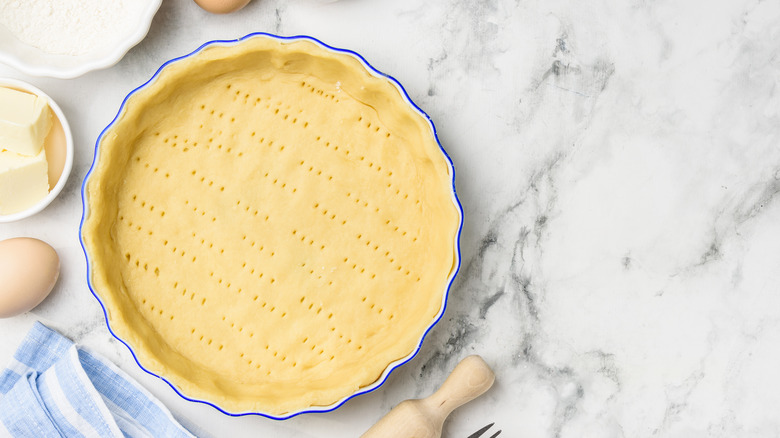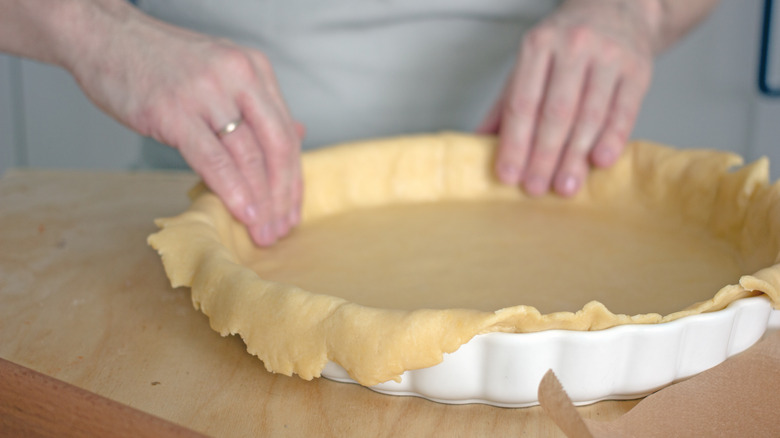The Reason You Should Always Pre-Bake Quiche Crust
Whether it's breakfast time and you have a houseful to feed, or you need a dish for that picnic this afternoon, quiche is there to save the day. A relatively simple pie-adjacent dish of eggs and fillings like finely-chopped vegetables, meats, or cheeses, quiche's handy slice-shaped servings make for a quick and impressive crowd-pleaser (especially when you opt for a recipe with fresh, aesthetically-pleasing garnish like a spring quiche, featuring goat cheese and fresh arugula).
However, the key to making such a simple dish impress is by getting all the components right, and many home cooks will probably tell you they've run into the same hurdle with their quiches: the infamous soggy bottom. Have you ever popped a lovely quiche Lorraine into the oven only to find the crust wet once the timer dings?
Of course, you can always opt for a crustless quiche and bypass the problem altogether. But, if that signature crispy, flaky mouthfeel is part of a proper quiche-eating experience for you, luckily, there's a simple way to avoid a soggy bite: Pre-bake the quiche crust. This technique is called "blind baking" (per Livestrong) and isn't just for quiche. Pre-baking is a useful technique to use when making any single-crust pie whose filling doesn't require baking or only requires a short bake time at a low temperature. Here's why it works.
No soggy bottoms here
According to Kitchn, if you pour your egg mixture into raw, unbaked crust, the wet composition will seep into the doughy crust and become partially absorbed, making it harder for the crust to crisp up in the oven. The result is a soggy, chewy mouthful. To remedy this issue, simply pre-bake your quiche crust before pouring in your egg mixture.
To do it, Kitchn recommends lining your pie pan with parchment paper and filling it with a heavy filler such as pie weights or beans. This will help the crust keep its shape. Then, it says, bake at 350 degrees for 20 minutes, then for another 10-15 minutes after removing the weights. However, the specifications of the technique vary depending on who you ask.
For example, the esteemed French baking school Le Cordon Bleu recommends chilling the pie dough for around 15 minutes before adding in the weights. Also, Le Cordon Bleu suggests home bakers opt for a hotter oven (375 degrees Fahrenheit) and base the bake time on a more visual assessment: Remove your crust from the oven once it becomes golden brown. On the other hand, Martha Stewart recommends a 30-minute chill before baking and 40-50 minutes in the oven. But, home bakers can play around with their times and techniques to figure out which pre-baking specs work best for them.

